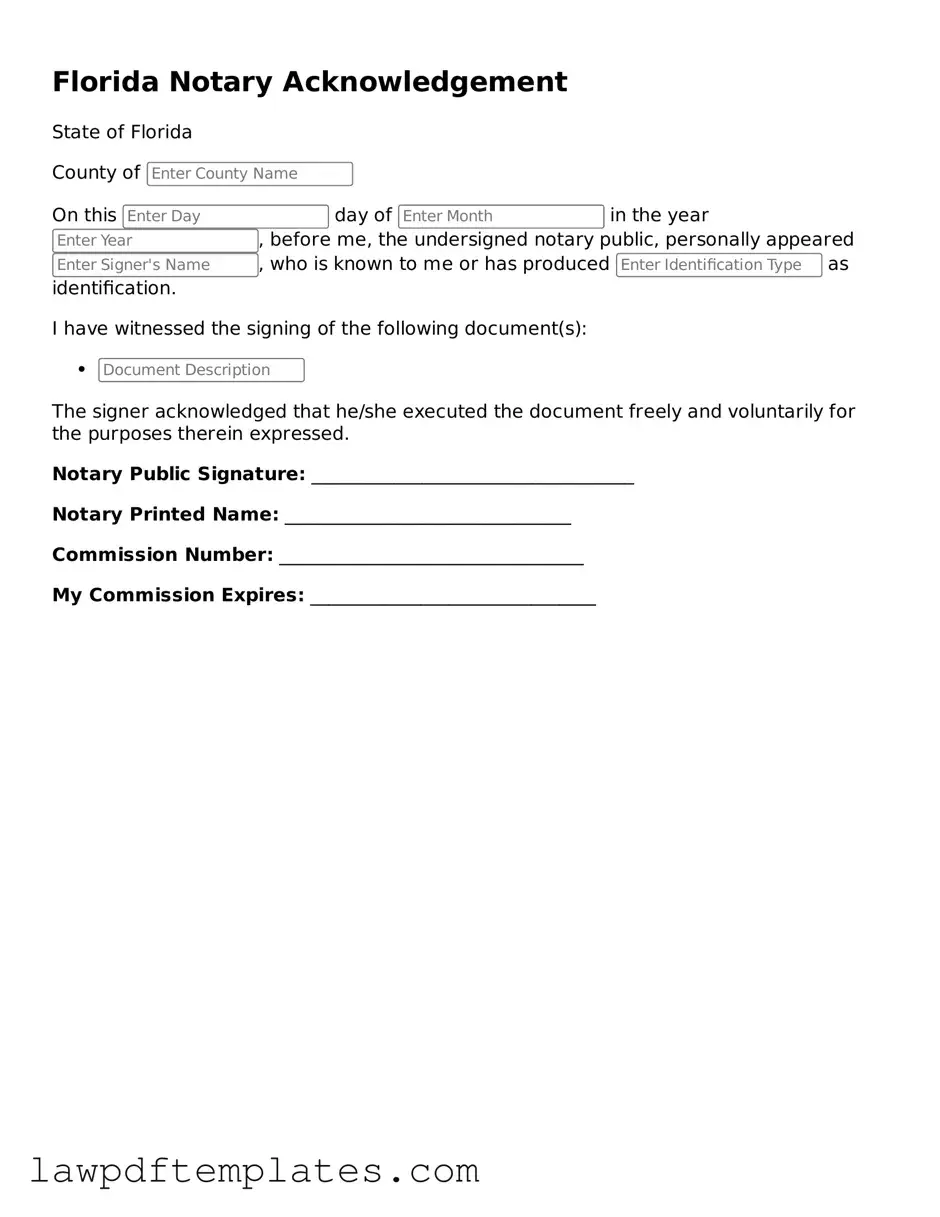Free Notary Acknowledgement Template for the State of Florida
The Florida Notary Acknowledgement form is a legal document used to verify the identity of a signer and confirm their willingness to sign a document. This form plays a crucial role in ensuring that transactions and agreements are valid and enforceable. To get started on your Notary Acknowledgement, fill out the form by clicking the button below.
Get My Notary Acknowledgement
